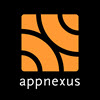I’ve worked in digital media long enough to recognize when I’m face to face with the opportunity of a lifetime. In this case I found myself face to face with my friend and former boss, Jon Hsu, who was now playing a leading role at AppNexus. AppNexus was making initial overtures to WPP about acquiring Open AdStream and Jon’s role that day was to give me a glimpse into what a deal might look like, as well as provide “over the wall” insight into how OAS would fit into the AppNexus platform if a deal was ever struck.
During our meeting, one moment stands out. Jon suddenly turned aside from his whiteboard and gave me a look I might describe as someone who’d just realized a missing string in M-Theory. He said with quiet certainty: “Ellen, you realize everything we’ve ever wanted to do… we now actually have the opportunity to make happen.”
I fully realized how integrating OAS into AppNexus was a bold move. It had been a slow build to the top but our work clearly demonstrated world-class results: Open AdStream was the second-largest publisher ad server in the world attracting blue-chip clients like Comcast, Dell, and ToysRUs. Meanwhile, at the tender age of seven, the AppNexus platform was generating nearly $2B in media spend on its platform, and already fielded best-in-class RTB technology. With our combined capabilities, we’d be well on our way to achieve AppNexus’ goal of building a complete suite of solutions for all members of the Internet economy. If integrating OAS into AppNexus came about as smoothly as Jon was drawing on his whiteboard, the marriage of technologies would be a game changer for all parties involved; an achievement greater than the sum of our platforms.
The acquisition and consolidation went through just as Jon had whiteboarded – but it’s one thing to whiteboard “crossing the Alps” – and another thing entirely to bring it to completion! I remember the moment I sat down with AppNexus Publisher Product Manager Mike McNeeley. Between conversations of cross-product training, sales scripts, and service levels, a growing set of questions started to weigh on my mind. While OAS ad serving was state of the art, the fact was this: our company had been founded the same year the first online banner ad was created. Having been through all the storms of “starting up,” we’d arrived at a space where we did our jobs well and managed our clients seamlessly and efficiently. Meanwhile, the culture of AppNexus had all the spitfire of a young, ambitious company ready to take on the globe. How would these very different cultures make sure that “greatness” truly “happened?” I remember during those early months how each organization — both OAS and AppNexus — took it upon itself not only to help its counterpart learn new technologies, but also to learn better practices. On our own end, we showed AppNexians the core processes we’d developed over our years in business; core processes that gave us our formidable reputation in the industry for exceptional client service. And in turn, AppNexians galvanized us with their collective level of far-reaching vision, off-the-charts energy, and can-do spirit – no matter what the odds.
But any growing pains I may have felt ceased to matter the moment I heard Tom Shields speak during a Publishers strategy planning session (a speech similar to the one he went on to deliver during AppNexus’s European Summit). Like OAS, AppNexus had recently acquired Shields’ highly successful company, Yieldex. By incorporating Yieldex technology into its stack, AppNexus could now take the multiple terabytes of data coursing through its platform and apply that data to develop better forecasting models for publishers. Put it this way: AppNexus and OAS were already providing publishers with the optimal services they needed to manage their inventory today. But with the consolidation of Yieldex’s Yield Management Analytics capabilities into the AppNexus platform, publishers could now accurately forecast the level of inventory available to sell to tomorrow’s buyers as well – and apply the appropriate price range.
It was a “Eureka” moment I’ll never forget; AppNexus Console, OAS, and YieldEx Analytics… I suddenly glimpsed how when put together they formed a perfect trifecta of integrated technologies. I knew then and there that not only was AppNexus able to go head to head with the tech giants of Silicon Valley, it was capable of winning. After all, we had everything we needed.
John Hsu’s prediction from months before had come true. Today, my own sense is that a year after being “integrated” into AppNexus, our OAS team seems more integral than ever to the overall mission of completing a full-stack platform that bridges buy side and sell side. Furthermore, it’s a pleasure to watch firsthand how publishers can do things on our new unified platform they weren’t able to do only a year ago: They can open up their inventory to programmatic demand within AppNexus. They can sell and pace campaigns based on video completions. Trafficking has been simplified by allowing ad operations to quickly query the platform to answer very detailed questions. And AppNexus’ data centers enable OAS to complete its overnight processing by 30%. In short, we’re faster on our feet than when we started 19 years ago!
While I count myself fortunate in helping to manage our current client roster, I’m excited to recognize that we’re just getting started. From the POV of my own whiteboard, I see greatness ahead.















